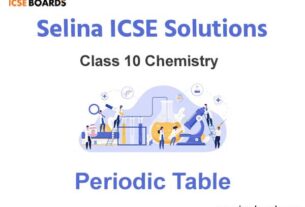EXERCISE
Q1. Define: (a) a physical change, (b) a chemical change. Give two examples for the above changes.
Answer:
(a) A physical change is a temporary alteration in which the original substance’s does not change and its physical characteristics, such as colour, condition, shape, and size, may change. Example: Boiling of water, Melting of ice.
(b) A chemical change is long-term alterations in which new compounds are created that differ from the original substance’s chemical composition, physical characteristics, and chemical properties.
Q2. Classify the following as a physical or a chemical change.
(a) Drying of wet clothes
(b) Manufacture of salt from sea water
(c) Butter getting rancid
(d) Boiling of water
(e) Burning of paper
(f) Melting of wax
(g) Burning of coal
(h) Formation of clouds
(i) Making of a sugar solution
(j) Glowing of an electric bulb
(k) Curdling of milk
Answer:
Physical change
(a) Drying of wet clothes
(b) Manufacture of salt from sea water
(d) Boiling of water
(f) Melting of wax
(h) Formation of clouds
(i) Making of a sugar solution
(j) Glowing of an electric bulb.
Chemical change
(c) Butter getting rancid
(e) Burning of paper
(g) Burning of coal
(k) Curdling of milk
Q3. Fill in the blanks.
(a) The process of a liquid changing into a solid is called ________
(b) A change, which alters the composition of a substances, is known as a___________ change.
(c) There is no change in the _____________of the substance during a physical change.
(d) The reaction in which energy is evolved is called_____________.
Answer:
(a) The process of a liquid changing into a solid is called freezing .
(b) A change, which alters the composition of a substances, is known as a chemical change.
(c) There is no change in the composition of the substance during a physical change.
(d) The reaction in which energy is evolved is called exothermic reaction .
Q4. Given reason:
(a) Freezing of water to ice and evaporation of water are physical changes.
(b) Burning of a candle is both a physical and chemical change.
(e) Burning of paper is a chemical change.
(d) Cutting of a cloth piece is a physical change, though it cannot be reversed.
Answer:
(a) Both water evaporation and water freezing to ice are physical changes since water can be returned to its original (liquid) state.
1. The ice can be heated to turn it back into water.
2. The vapours can be cooled to turn them back into water.
(b) When a candle is lit, some of the solid wax melts and transforms into a liquid before evaporating to create a flame. The evolution of light and heat energy results in the formation of new compounds like CO2 and H2O vapour. A chemical shift can be seen here. The molten wax solidifies once again when some of it falls to the ground. It demonstrates a shift in form. Thus, the generation of CO2 and H2O constitutes a chemical change while the melting of candle wax is a physical change.
(c) Ashes are created when a piece of paper is burned. The ash cannot be converted back into paper, even after the burning has ceased. This demonstrates that the transformation of paper into ash is a long-lasting, irreversible alteration.
(d) Because it merely affects the condition, size, shape, colour, texture, or fragrance of some or all of the constituents that change physically and does not alter the chemical composition of the fabric.
Q5. Give four differences between physical and chemical changes.
Answer:




